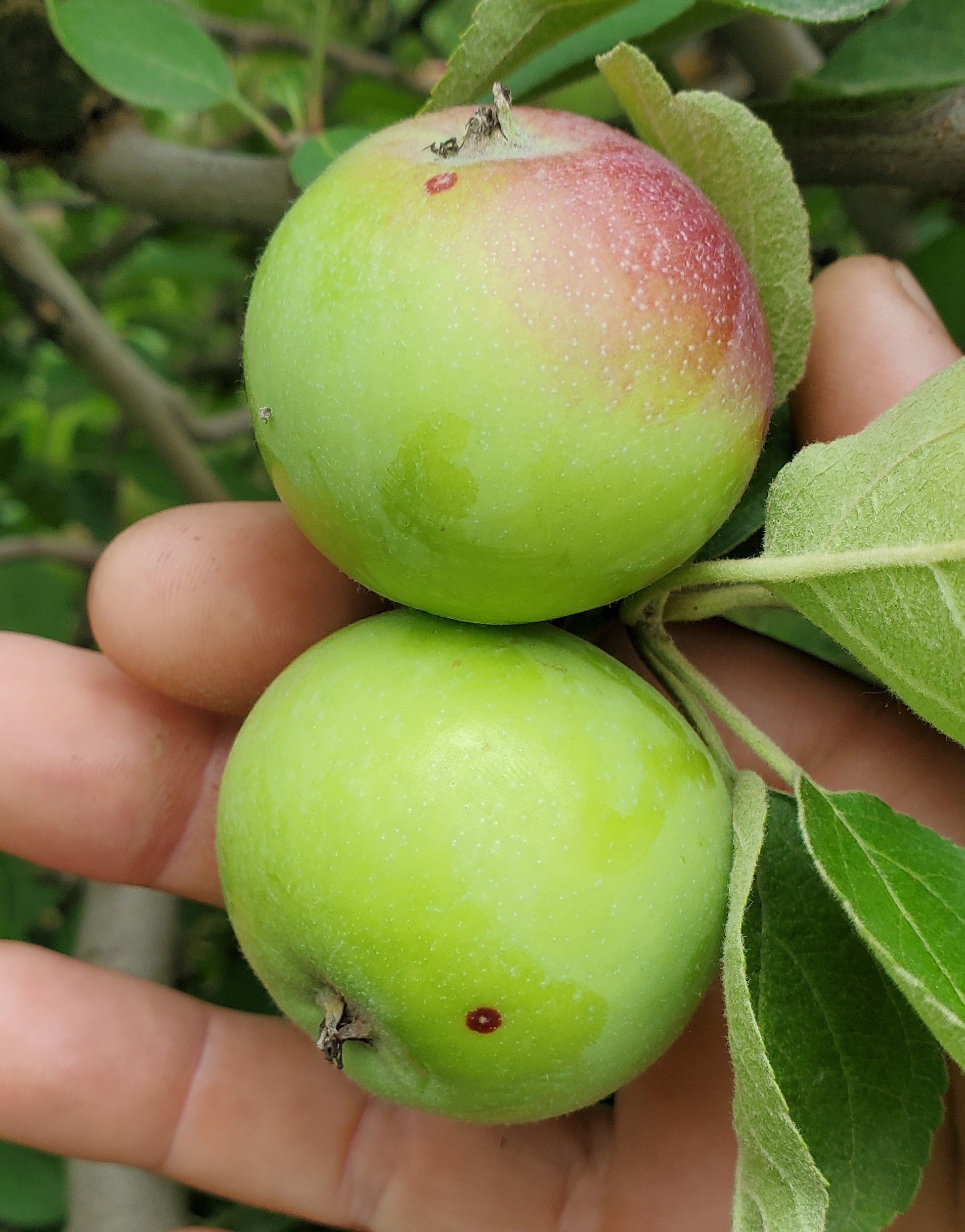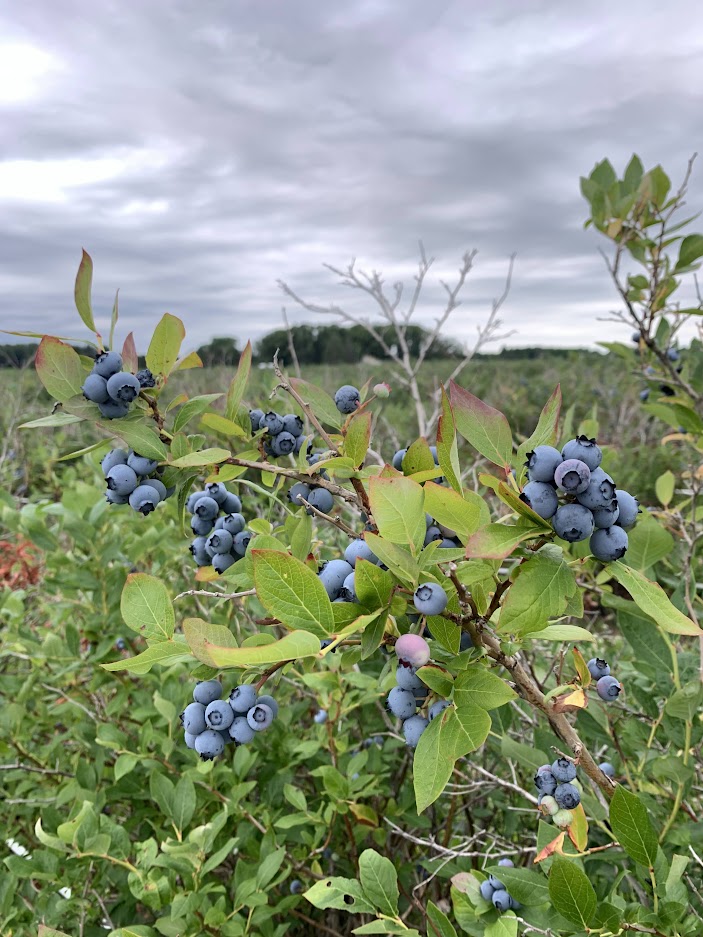Southwest Michigan fruit update – July 12, 2022
Soils are dry. Crops are showing some stress. Harvests of several stone fruits are starting.

Weather
Last week started warm with highs falling through the eighties as the week progressed. Storms moved through the region the evening of July 4 and into the morning July 5. A few showers throughout the week added to the rain totals. The week ended with an average of 1.84 inches of rain in southwest Michigan. Last week’s rains helped moisten the soils, but it doesn't appear to have been enough to reverse the dry trend. Southwest Michigan isn't in a drought but drought conditions can be found to the south and north of our region. See the current regional drought monitor.
This week will be slightly cooler with highs in the upper seventies and lower eighties with a little rain at the beginning of the week and over the weekend.
With another warm week, we picked up a little more than average number of degree days, 212 growing degree days (GDD) base 42, 156 GDD base 50.
|
Southwest Michigan GDD summary from March 1 through July 11, 2022 |
|||
|
Station |
GDD 42 F |
GDD 45 F |
GDD 50 F |
|
Benton Harbor (SWMREC) |
2066 |
1782 |
1349 |
|
Lawton (Lawton) |
2056 |
1774 |
1345 |
|
Fennville (TNRC) |
1895 |
1619 |
1200 |
|
Average for the SW region |
2028 |
1746 |
1320 |
|
Average last week |
1816 |
1555 |
1164 |
Tree fruit
With the sunny weather and high evapotranspiration rates the past couple weeks, trees in drought prone areas may continue to be prone to stress as the soils continue to dry out. Leaf browning and edge curling drought damage is noticeable in young high density blocks on sandy sites with inadequate irrigation.
San Jose scale damage to fruit is beginning to be seen. Japanese beetle populations have been building over the last two weeks.
Peach and nectarine early season harvest continues with Desiree, and Harrow Diamond in central Berrien County, with PF Early 8 Ball and Earlystar starting soon. Larvae laid by second generation oriental fruit moth are becoming easier to find in fruit. Both lesser and greater peach tree borer adults are flying. There are trunk spray chemical options beyond chlorpyrifos, but read labels carefully when choosing.
In cherries, sweet cherry harvest is close to done. Montmorency tart cherry harvest is underway. Cherry fruit fly adult catches have begun in the Trevor Nichols Research Center trap line. Spotted wing drosophila catch numbers are continuing to increase. Late harvested tart cherries are especially prone to this insect. Scaffold decline due to Verticillium wilt is showing up in tart cherry blocks. Browning under the bark tends to extend to the affected limb with this disease. Internal browning by Phytophthora crown and root rot tends to be restricted to the root and graft union zone.
In plums, early Japanese plum Early Golden and plumcot Spring Satin are now being picked with Shiro starting soon. Brown rot is the primary disease concern as fruit start to ripen.
Apple fruit are now prone to sooty blotch and fly speck infection in the southwest region according to the North Carolina State University model. The first symptoms and need for treatment are expected when the accumulated hours of wetting starting 10 days after petal fall reaches the range of 240 to 290. The current sum for the Bainbridge site is 245. Woolly apple aphid colonies are becoming easier to find. Codling moth and oriental fruit moth are the primary insect concerns for most orchards. Farm-specific trap counts for these two insects are the best guide for judging need for treatment.

Small fruit
In grapes, Many vinifera wine grape cultivars are at buckshot berry. Most hybrid wine grape varieties and juice are near berry touch to bunch closure. Disease management of phomopsis, black rot, downy and powdery mildews are the primary focus currently. Grape berry moth second generation began just over a week ago. The 810 GDD biofix used for grape berry moth insecticide timing was around July 2 for most growers in the region. The 910 GDD timing for traditional insecticide applications was on July 6. Grape berry moth damage was found in Van Buren County. See the article “Using the MSU Enviroweather grape berry moth model in 2018” for more information on grape berry moth biofix. In wine grapes, materials to control botrytis should be included in the sprays. Downy mildew and phomopsis damage is being seen.
Blueberry harvest is in full swing in Southwest Michigan. Fruit set looks good in many locations. Disease focus should be on early fruit rot management especially with all the rain from last week. Even with the rain last week, irrigation should be continued to maintain moist soils, especially in sandy sites. Early fruit size is generally good, but continued water helps keep the berry sizes high for subsequent pickings. SWD populations have increased slightly over the last week, likely due to the rain and cooler temperatures. The numbers are still low but will increase quickly as fruit in the wooded areas around fields continue to ripen.

Strawberry harvest is finished. It is time to renovate if you have not already.
Bramble harvest continues. Maintain fungicide programs to protect from fruit rots and monitor for spotted wing drosophila so you can stay ahead of the expected population increase coming soon.
Cranberry bloom is ending. There is a wide range of fruit size, from pea to pin head. Some fruit rots were observed in the field.

In currants and gooseberries, champagne currant harvest is complete. Rd currant harvest is continuing. Gooseberry harvest should begin soon.
Hops flowering is underway. Some blocks that were trained early have almost fully formed flowers.
Upcoming meetings
The Southwest Michigan Viticulture Field Day will return to the Southwest Michigan Research and Extension Center for 2022. As tradition holds, the event will be the last Wednesday of July (July 27, 2022) and will include presentations of ongoing research in southwest Michigan. The event will once again conclude with a steak dinner and local wine tasting. Registration for the Viticulture Field Day is online through the Michigan Grape Society’s website.
Related articles
- 2022 Fruit insecticide registration update
- Southwest Michigan fruit update – July 5, 2022
- Michigan grape scouting report – July 6, 2022
- Southwest Michigan fruit update – 2021 review
- Managing bacterial canker in sweet cherries: What are the options?
This work is supported by the Crop Protection and Pest Management Program [grant no 2021-70006-35450] from the USDA National Institute of Food and Agriculture.



 Print
Print Email
Email
